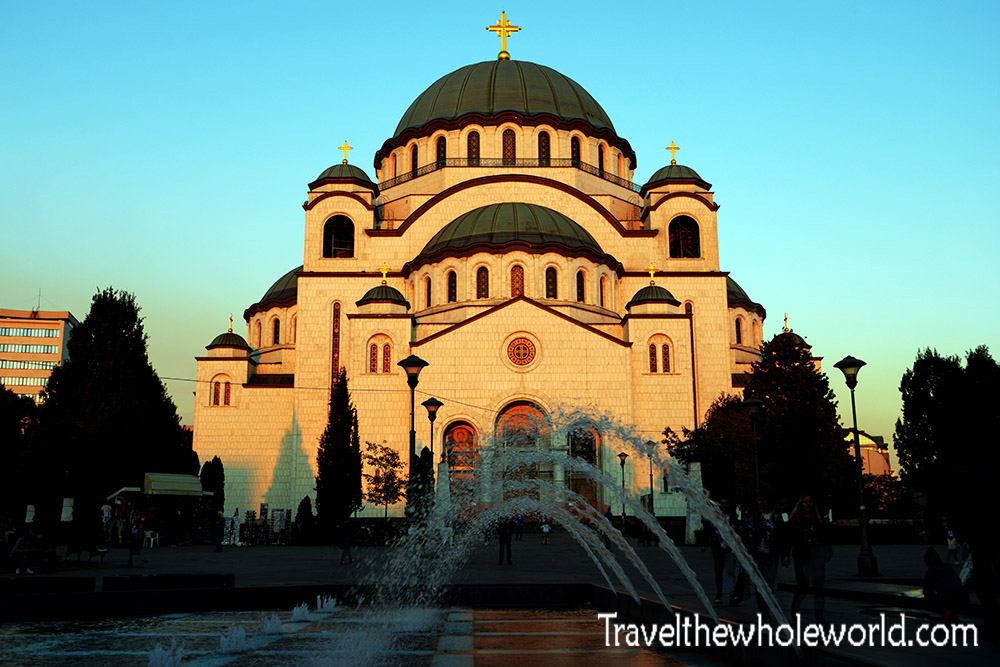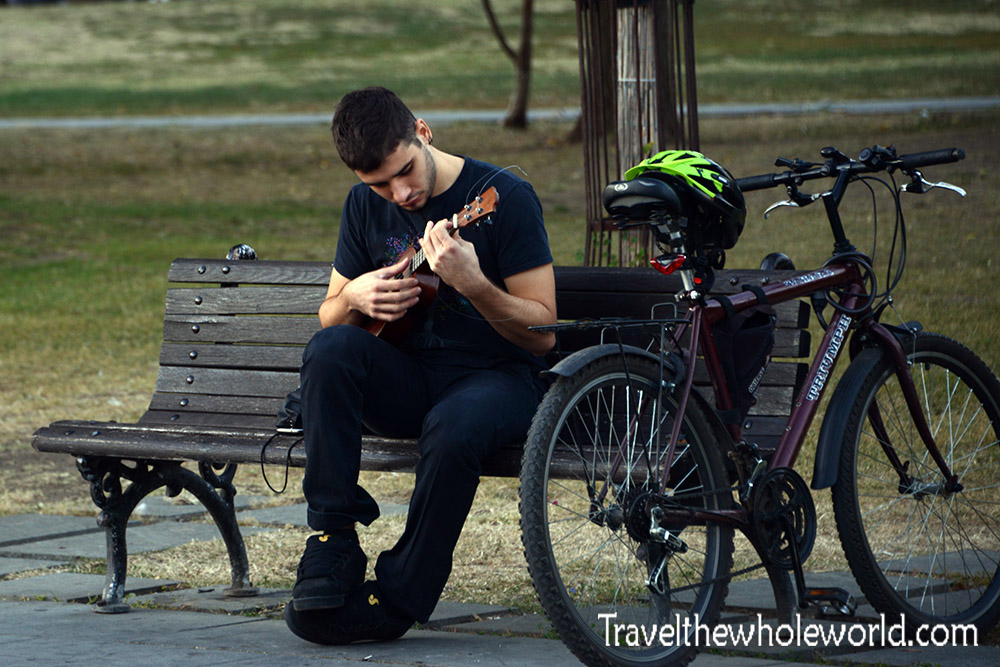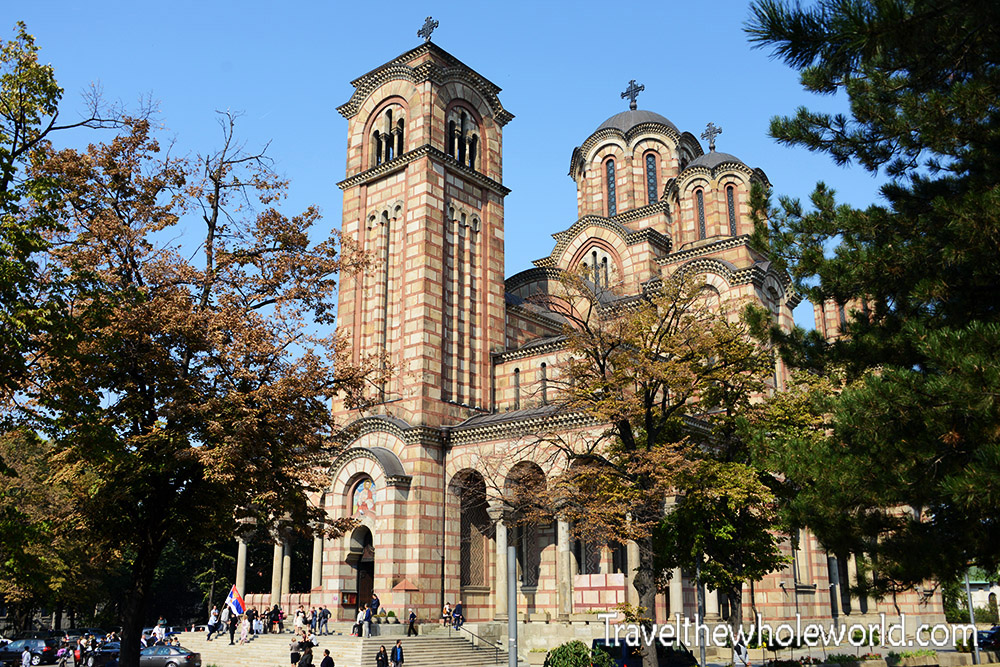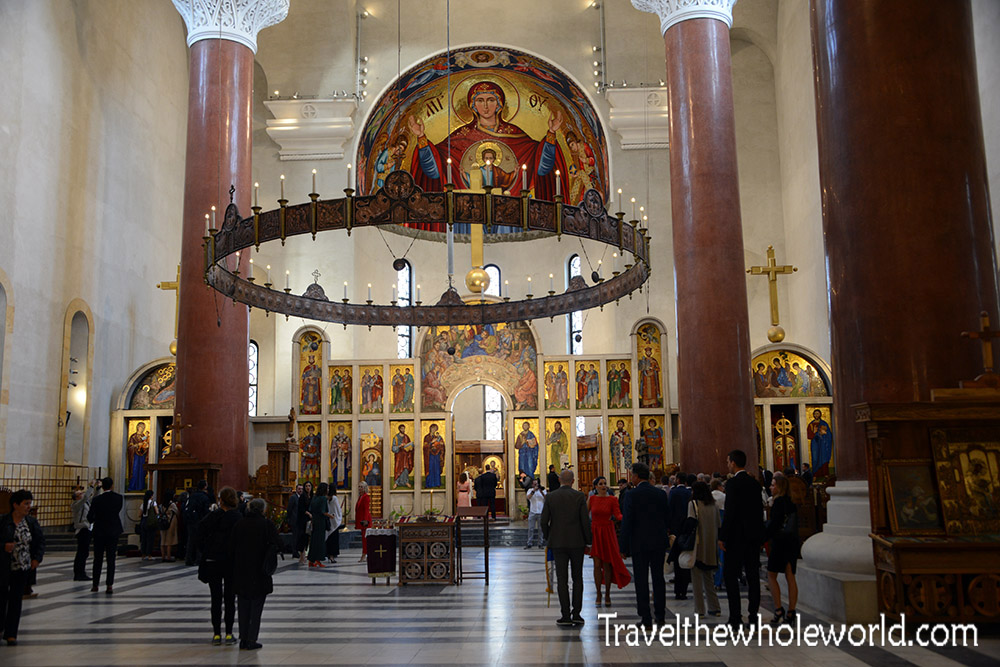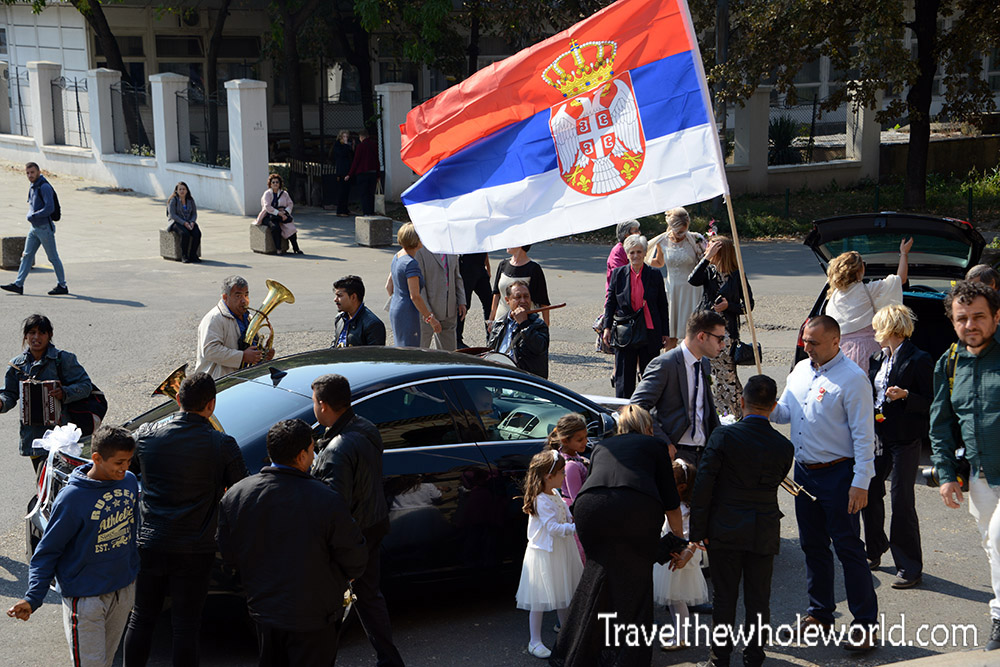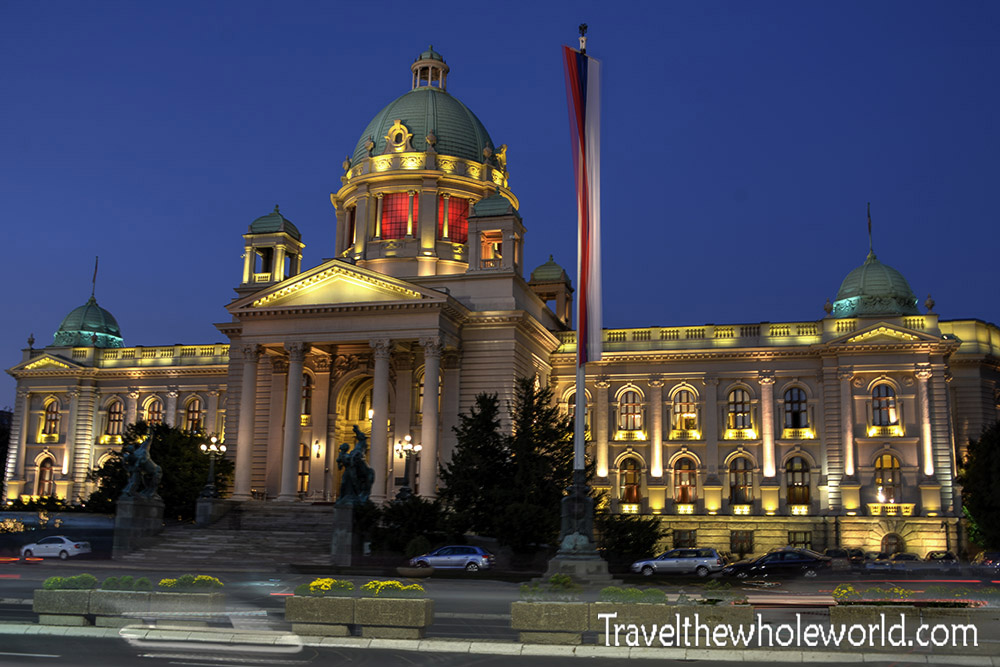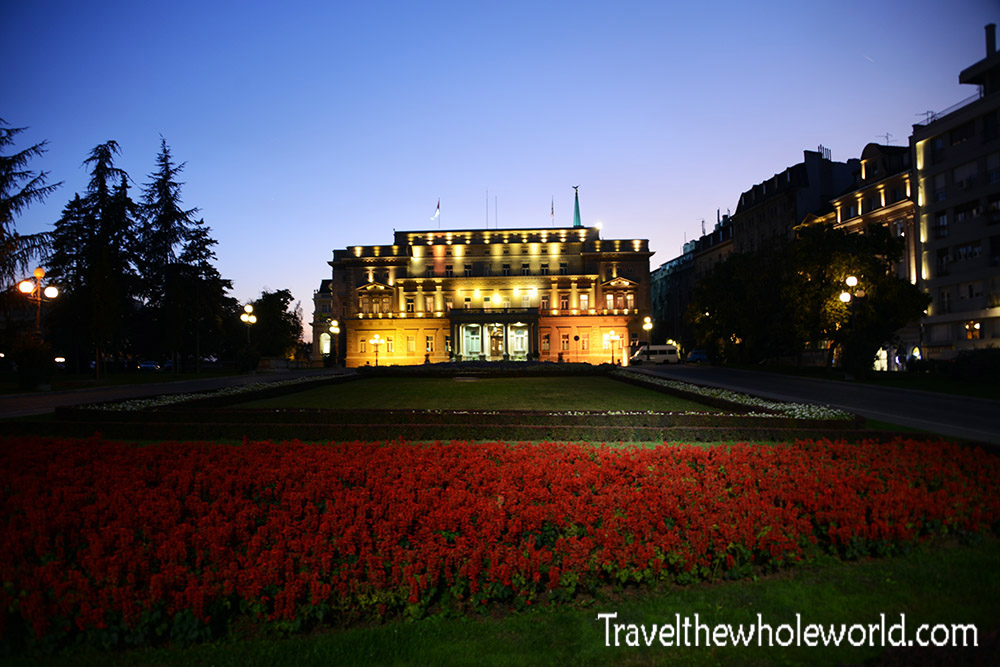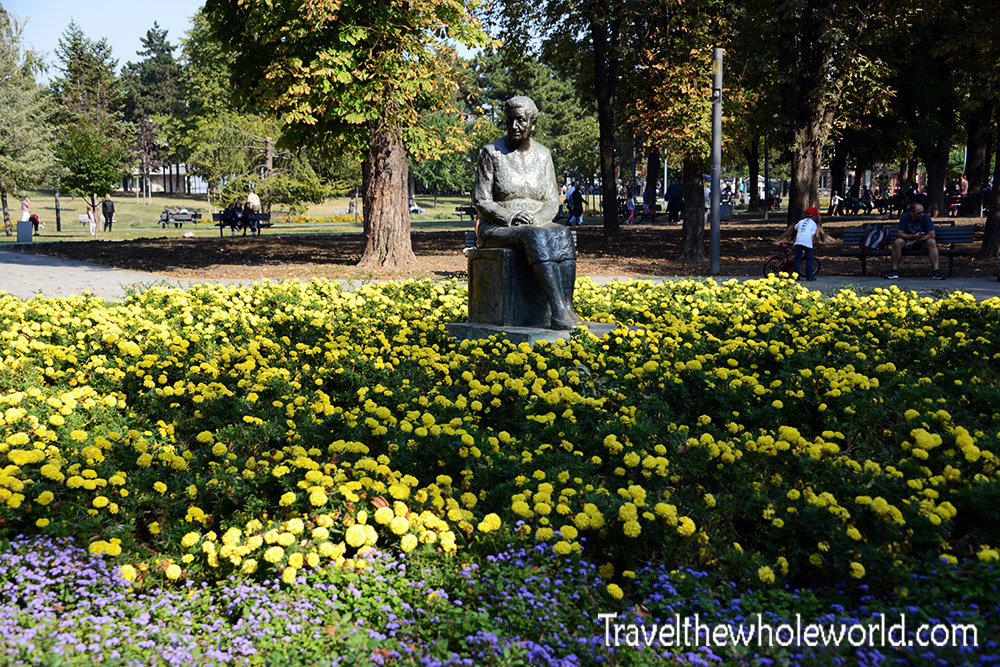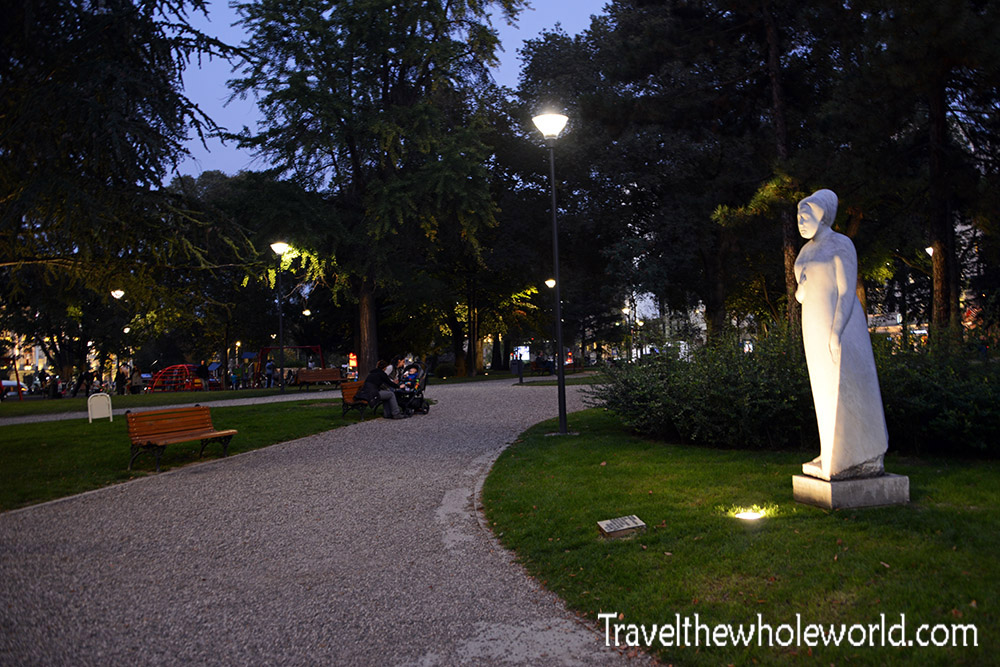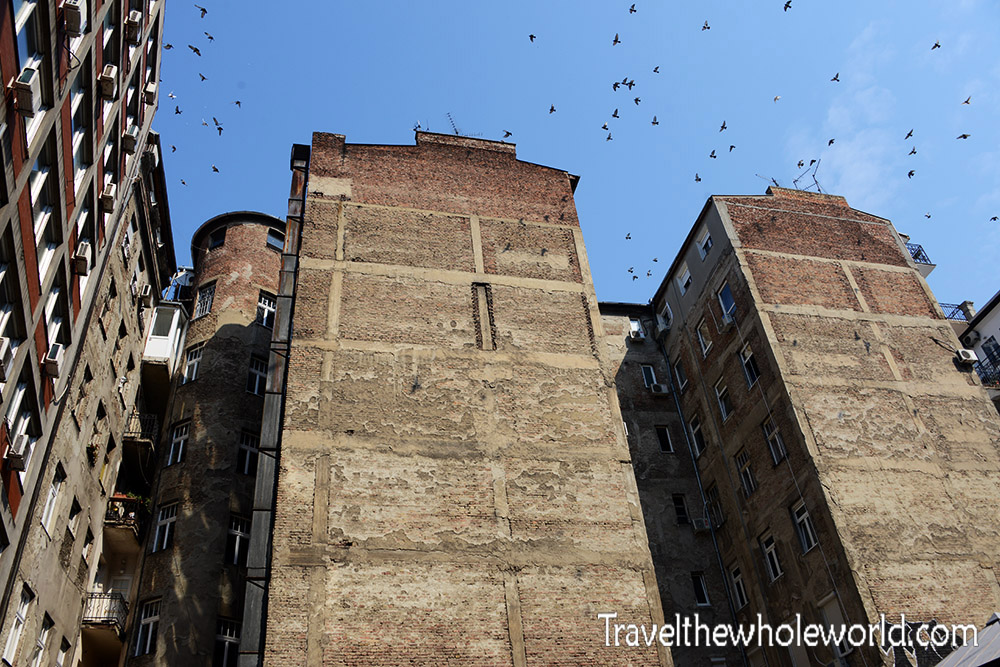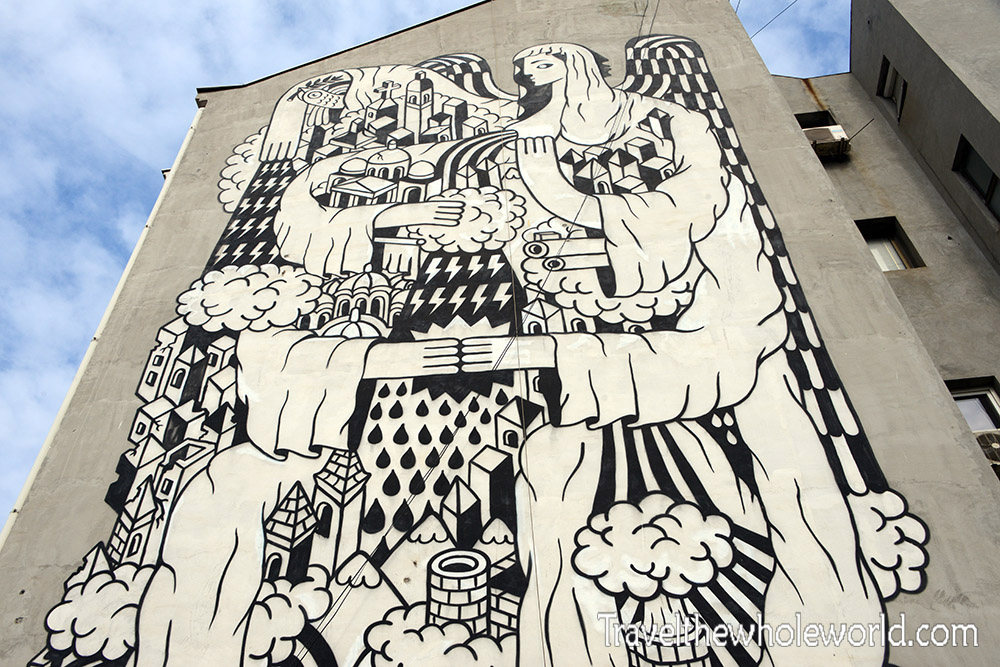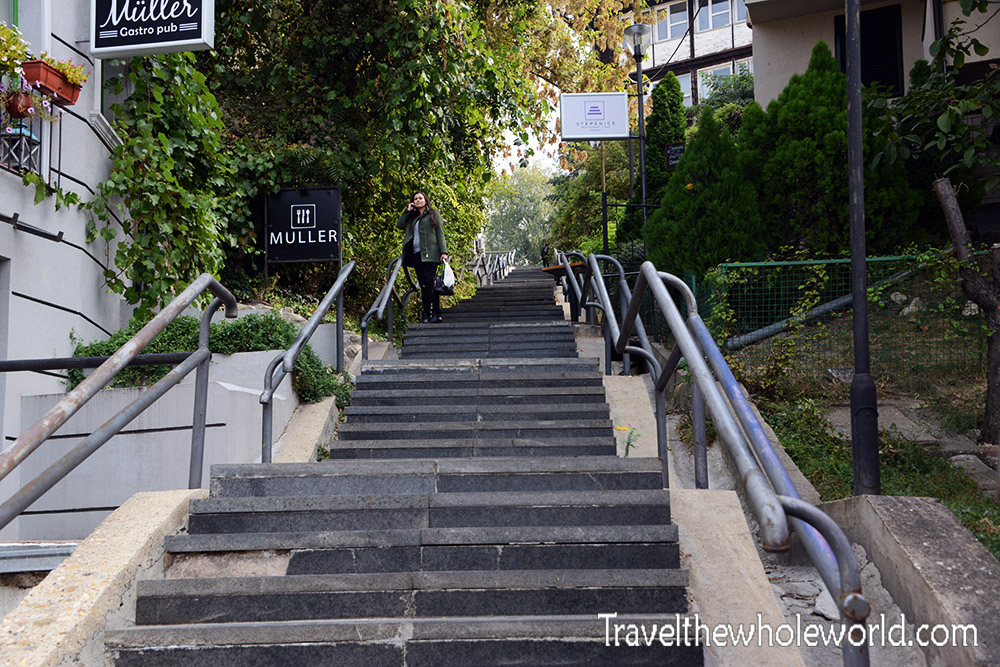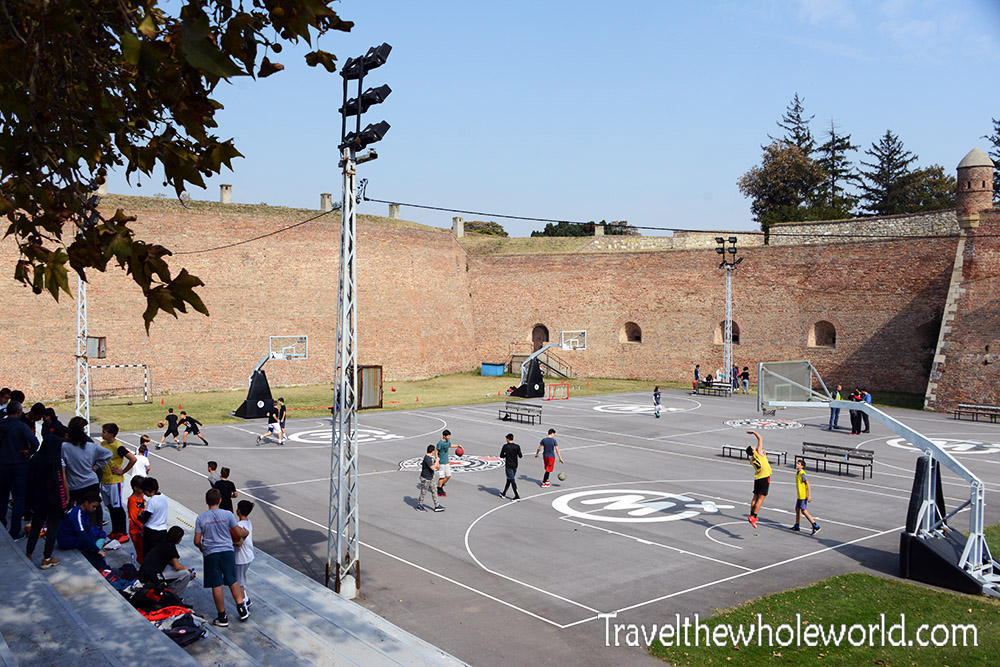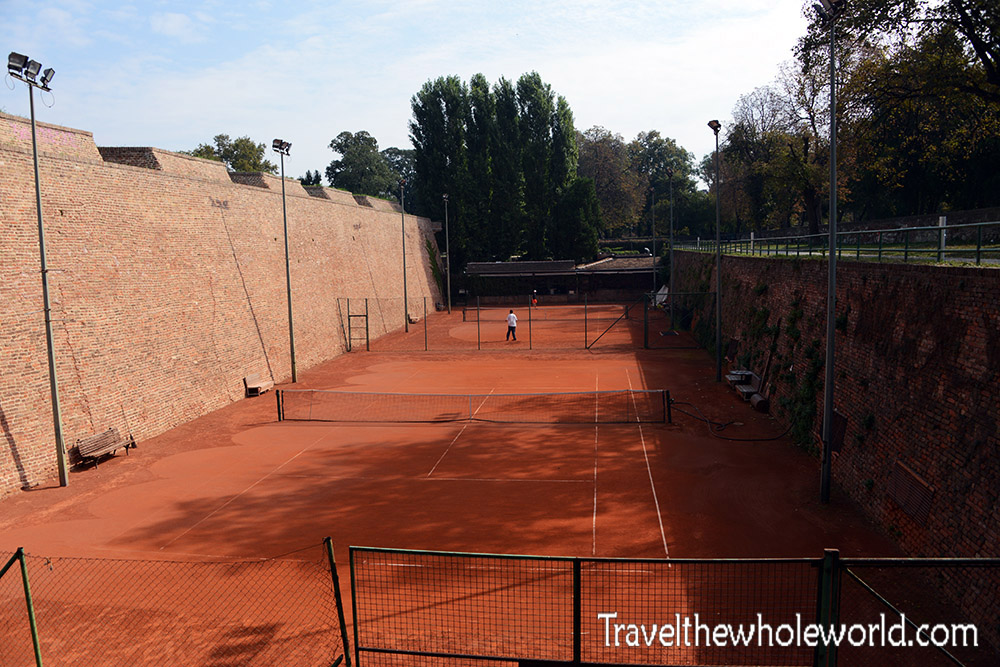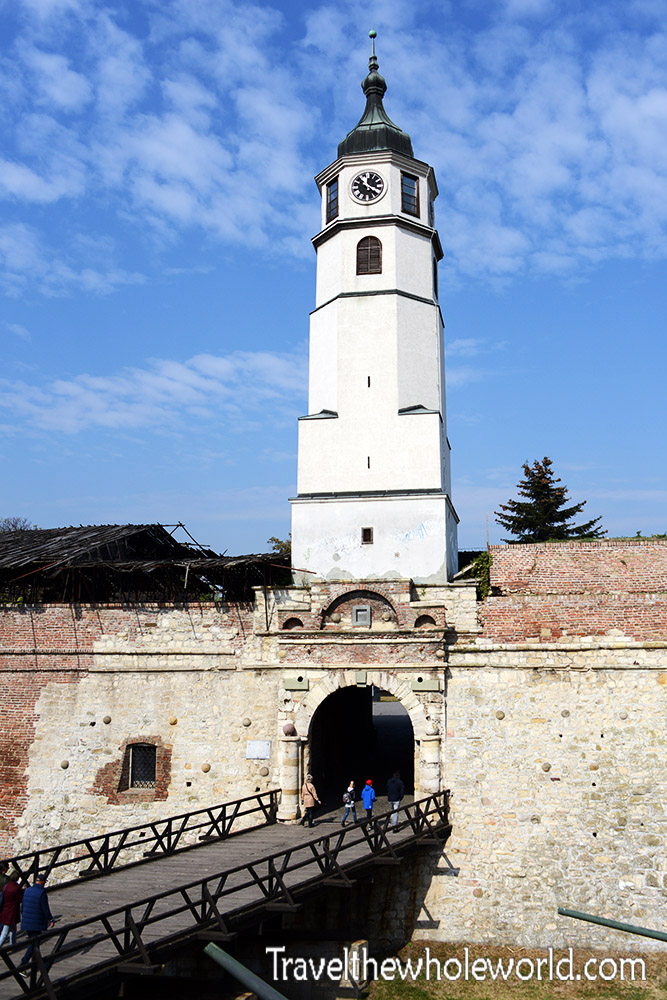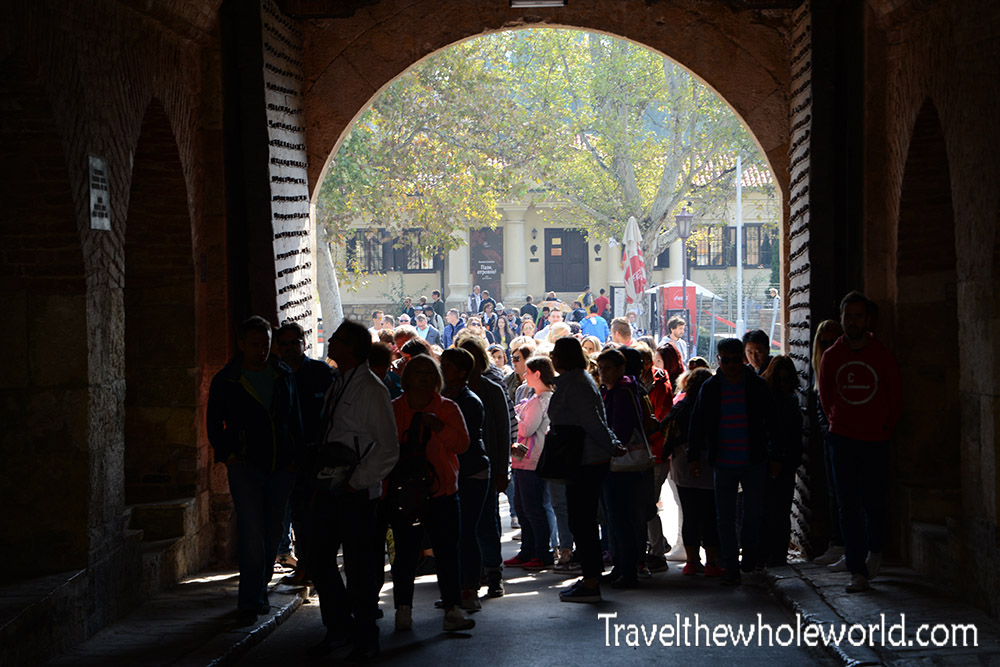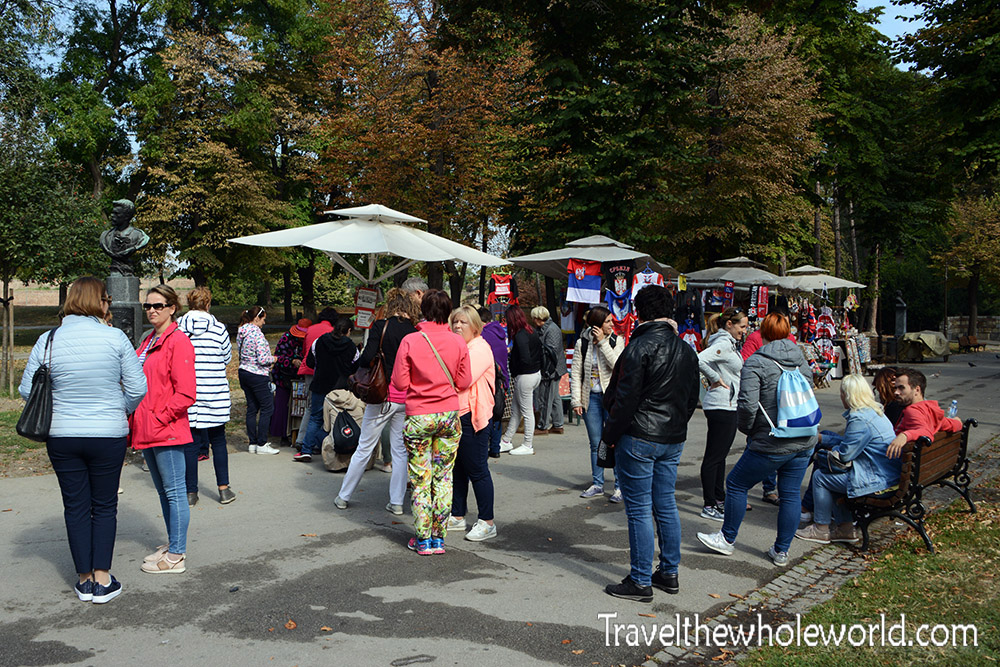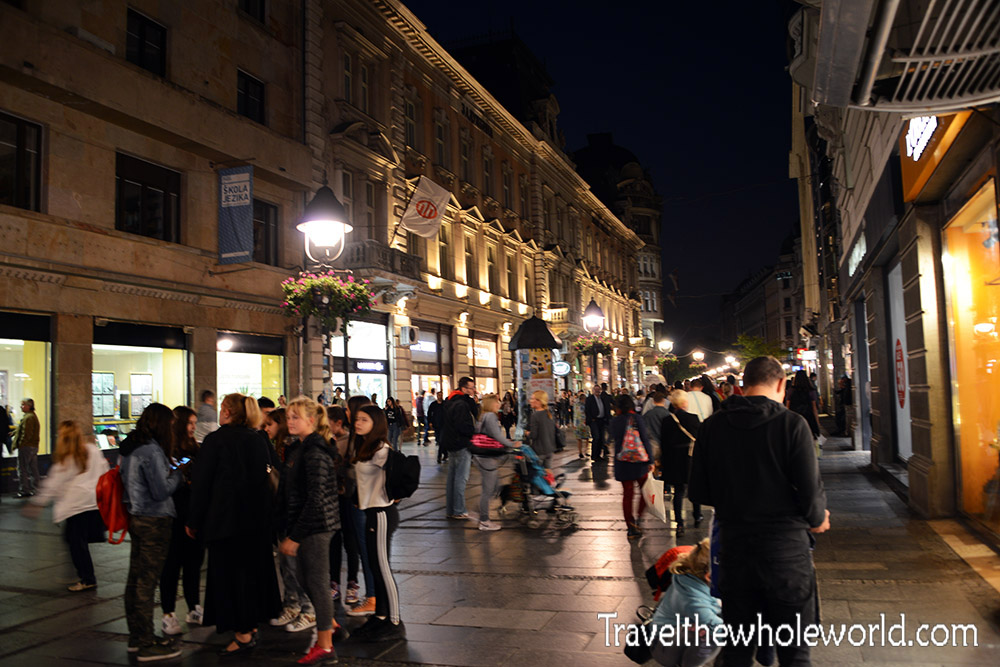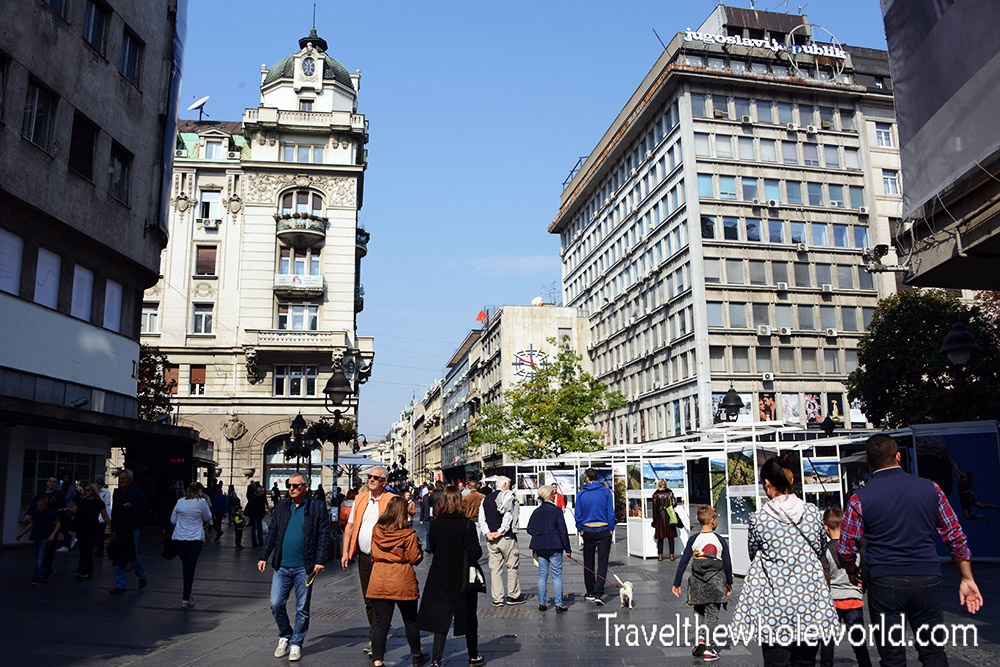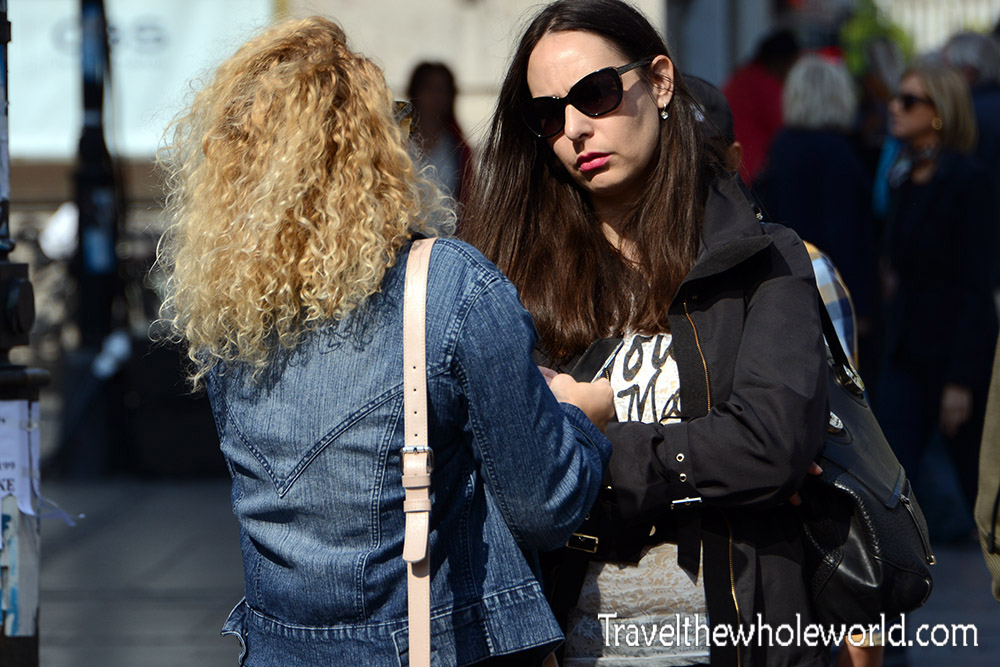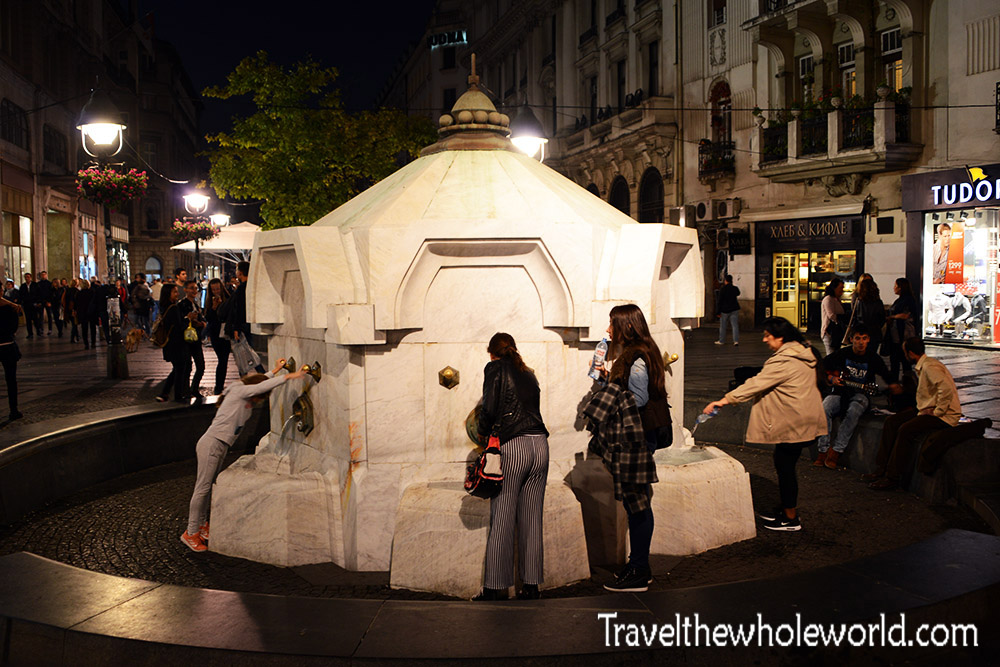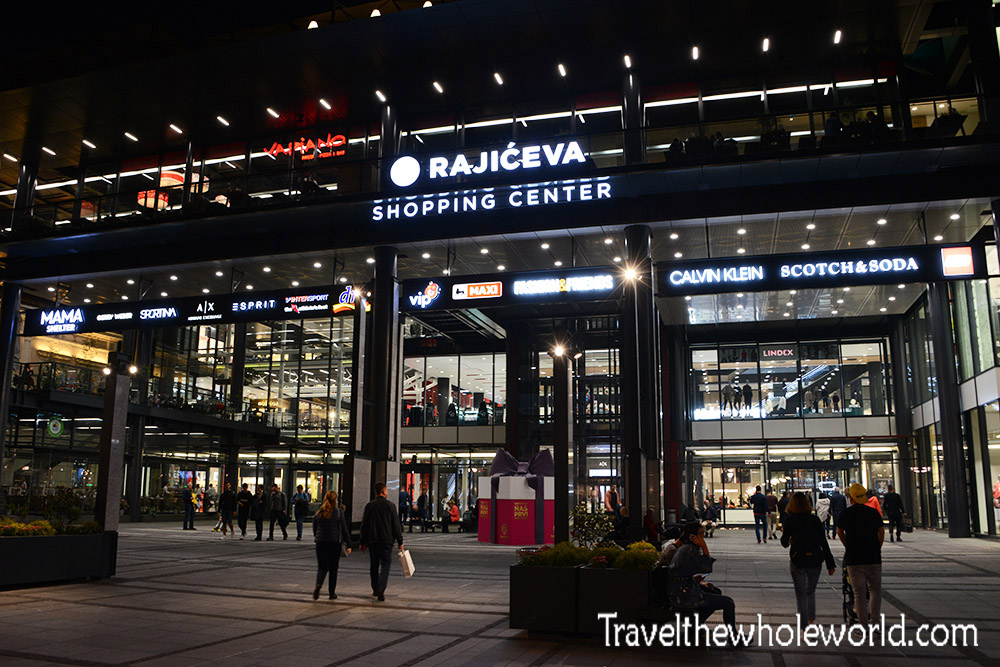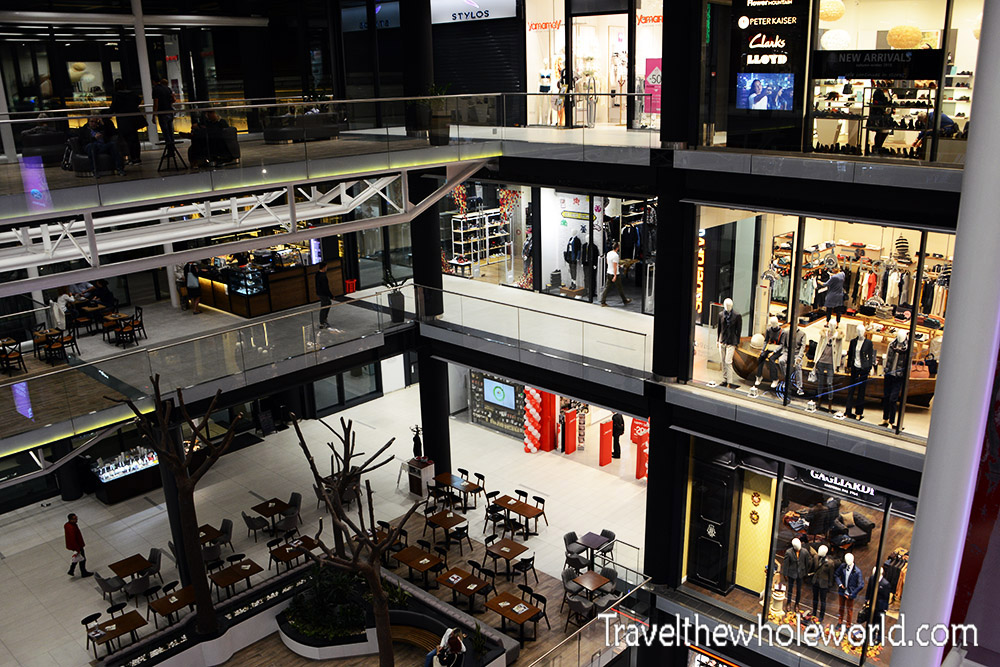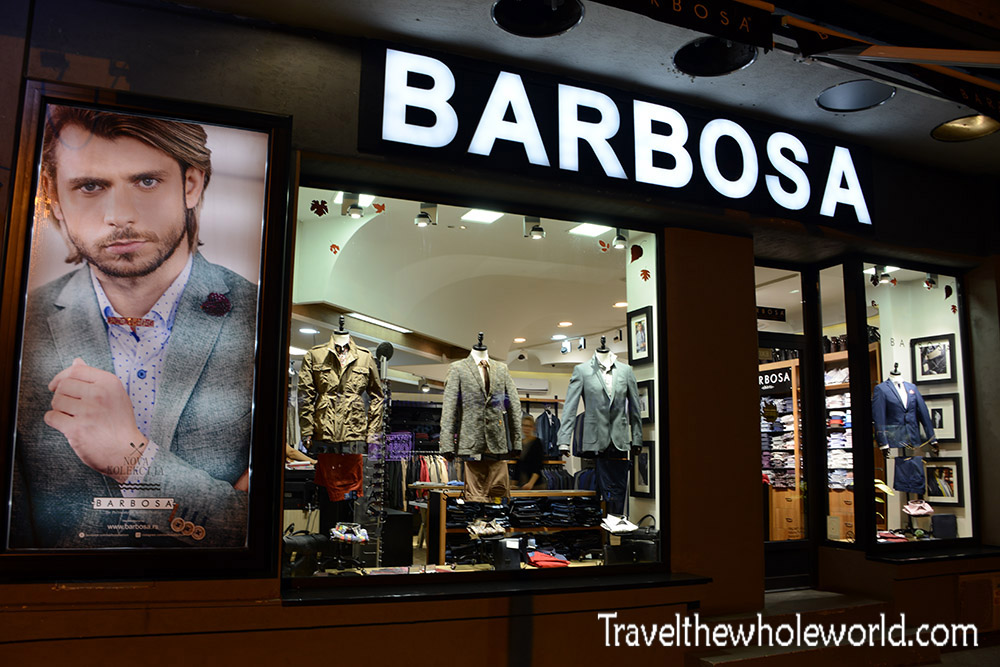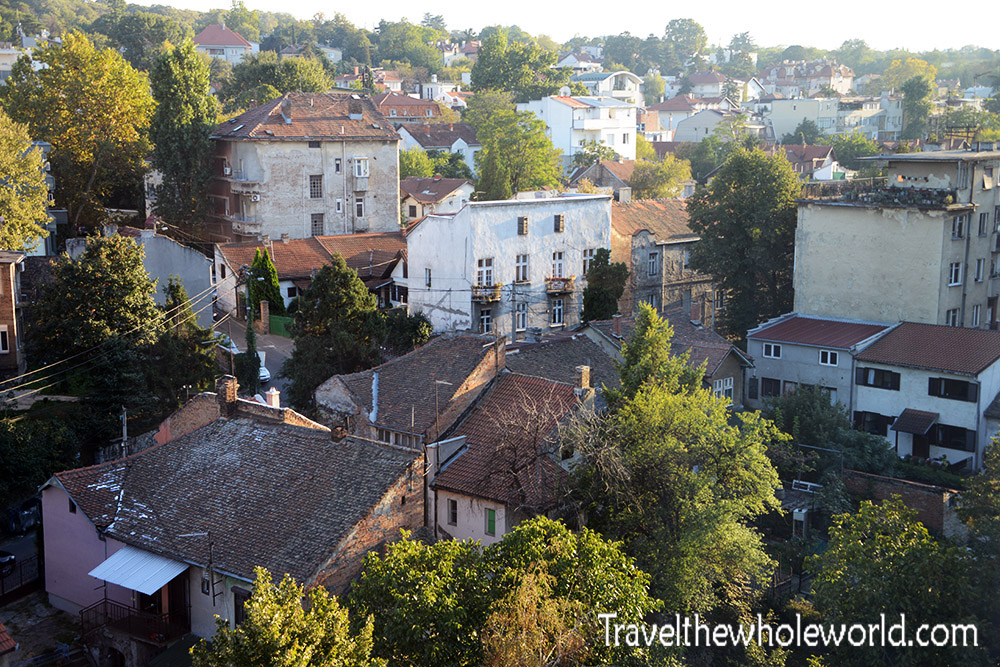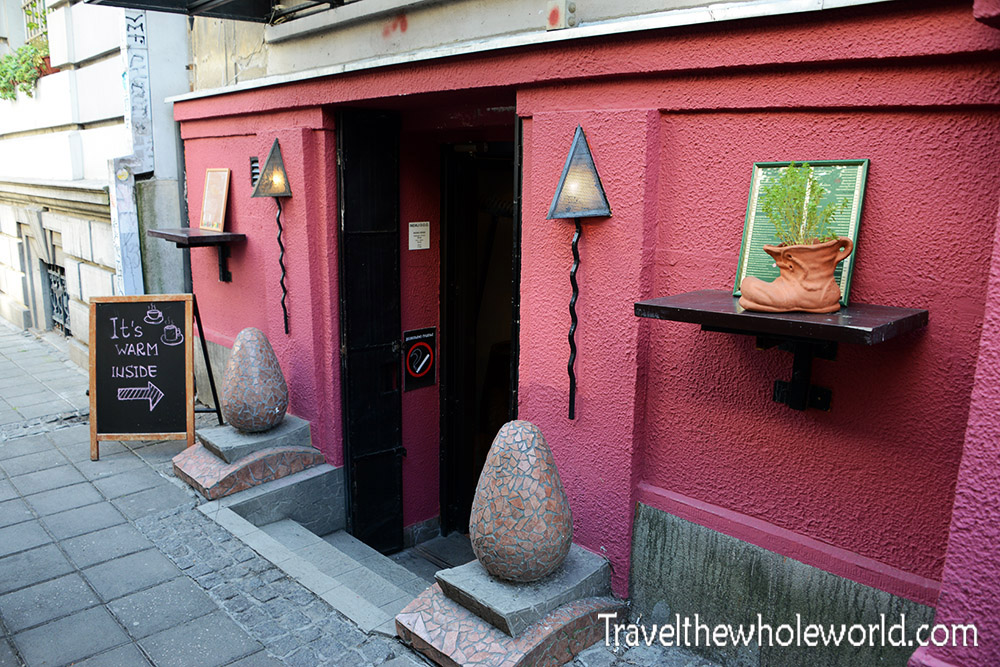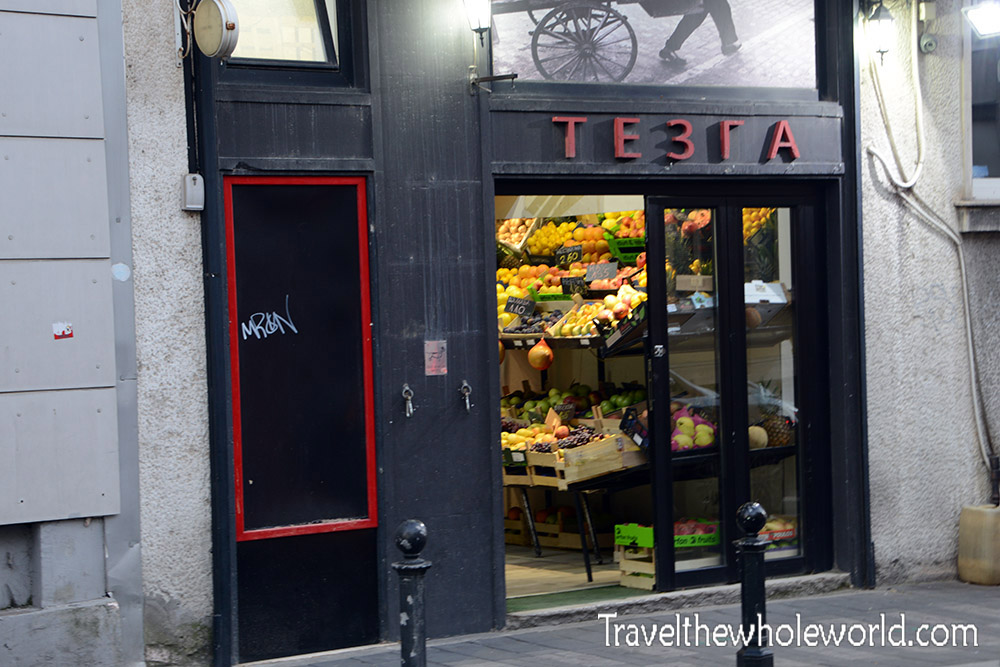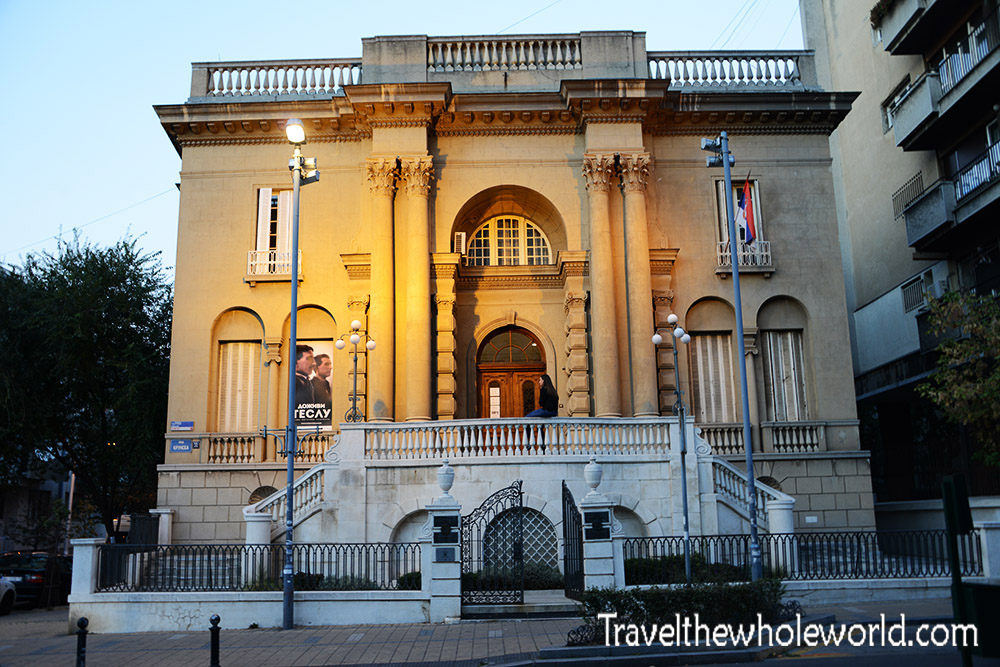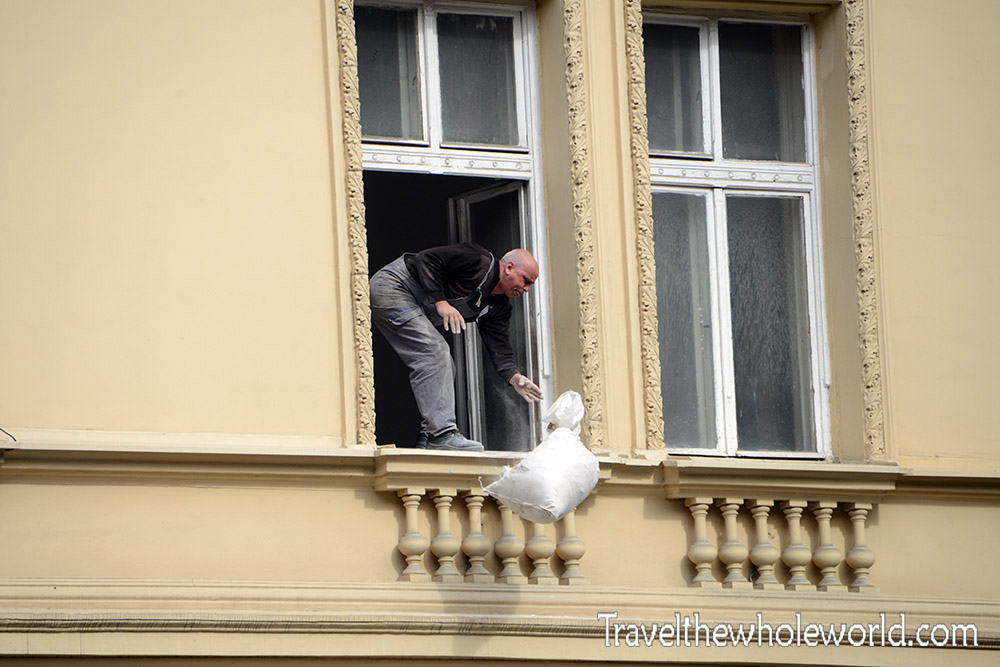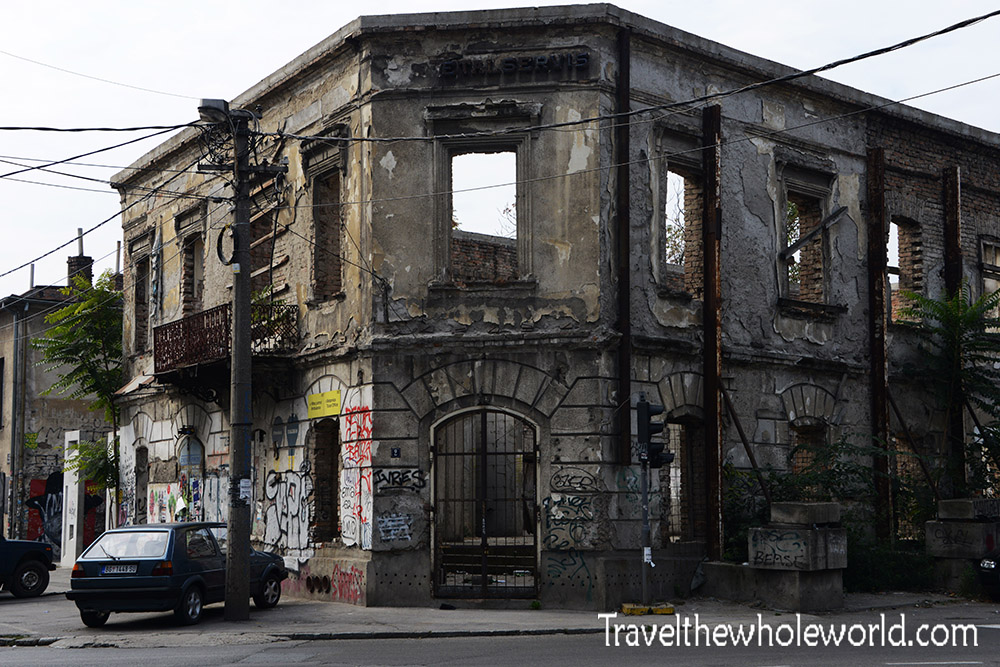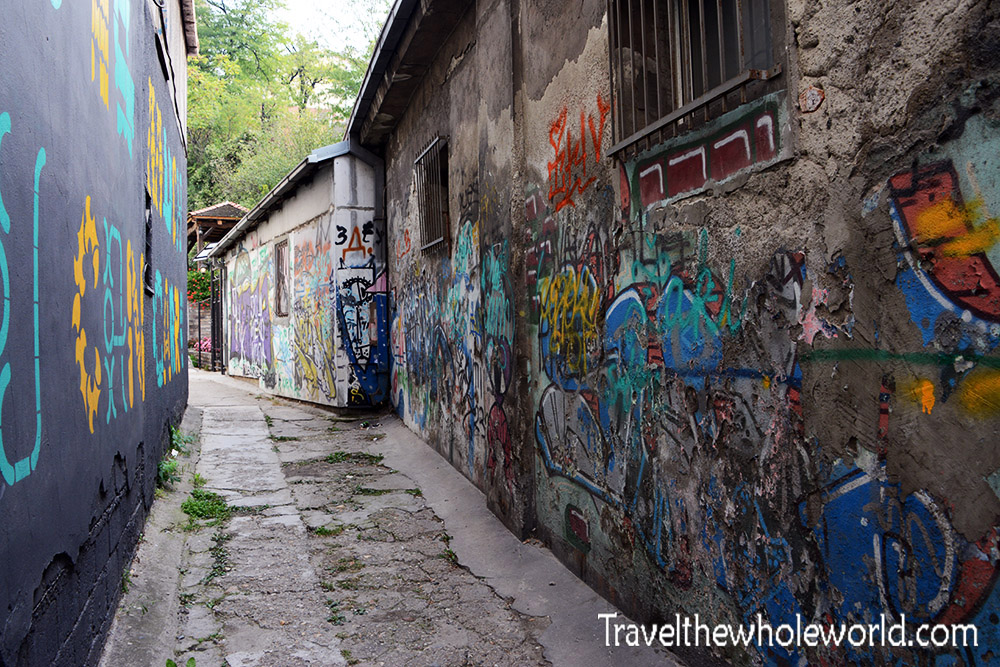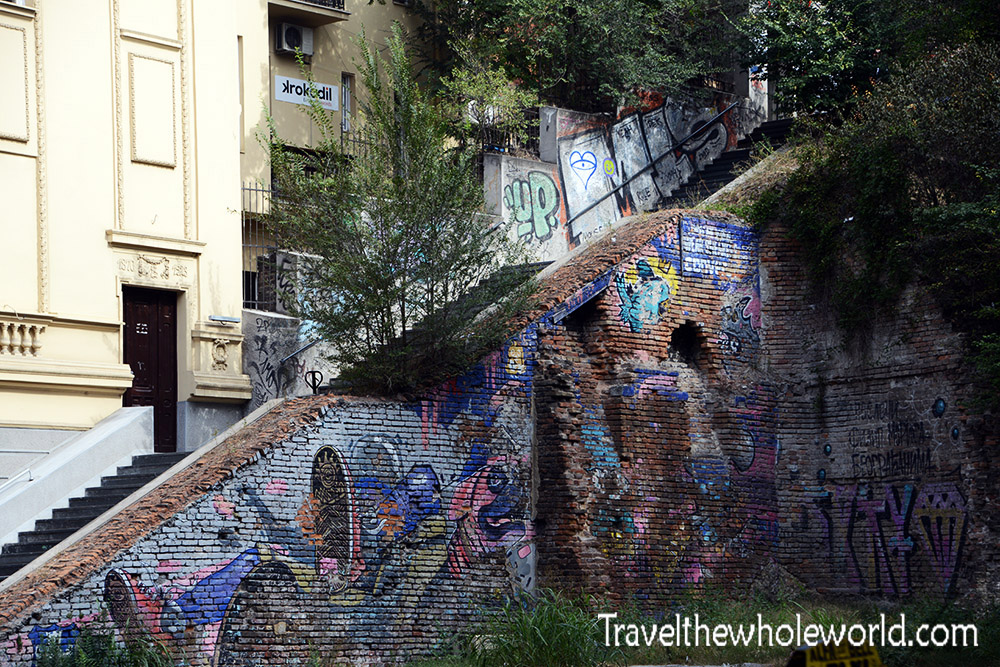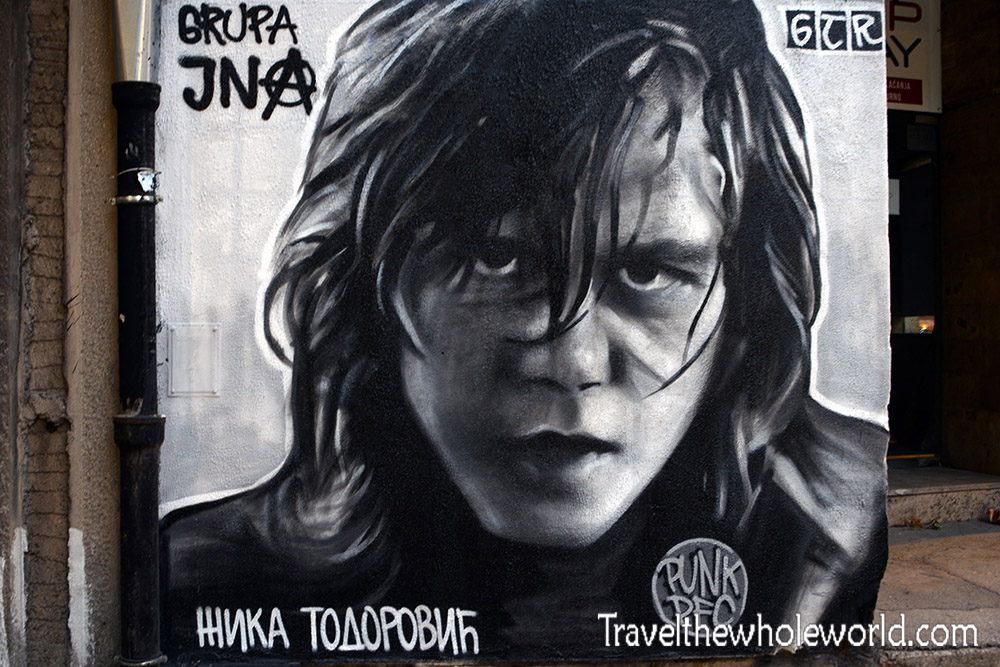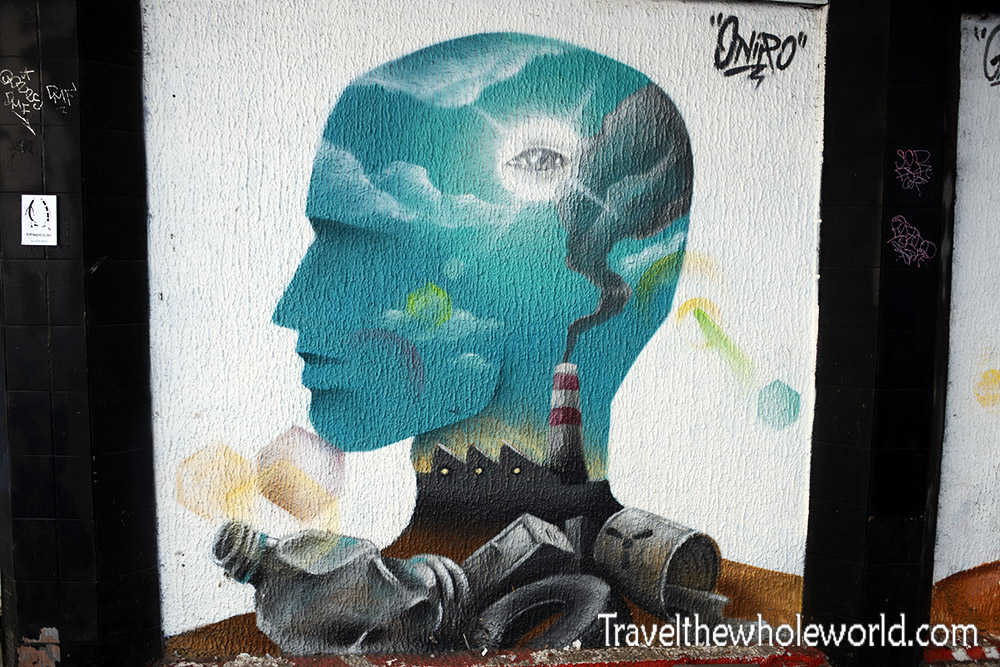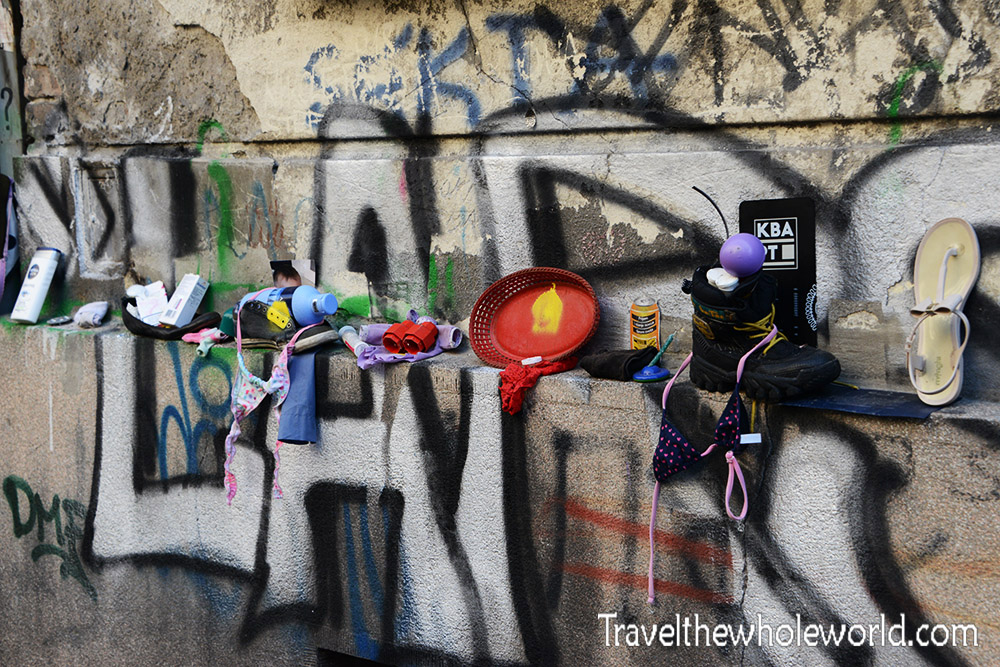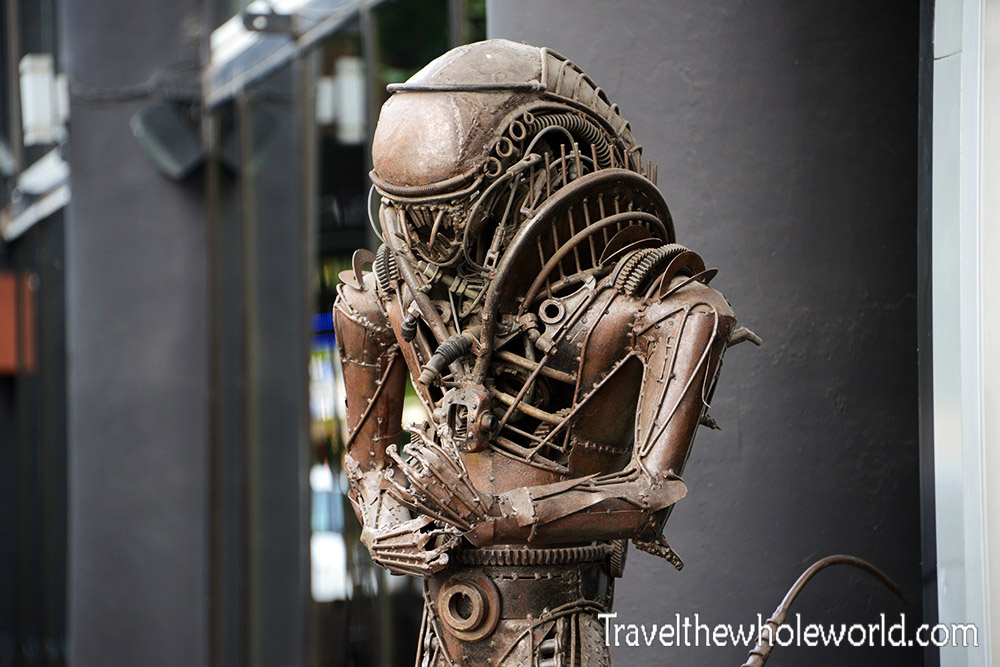Visiting Belgrade
If there is one place that Serbia is famous for, it’s their Church of Saint Sava; the largest orthodox church in the world. I made the right decision to make this the first place I visited in Belgrade. This was followed by a foolish decision to decide to return and go inside another day, which of course didn’t happen. It’s not an easy task to build one of the largest churches in the world, and construction has started and stopped multiple times during its history. World War II, the NATO bombing in 1999, and other events led to the question if it’d ever be finished. The exterior was finally completed in 2017, and during my visit the inside work was still being done, so I’d like to convince myself it’s better to wait and see the interior when its finished! The church is dedicated to Saint Sava, who founded the Serbian orthodox church.
Another part of my excuse for not initially going inside the Sava church was that there was so much going on outside. The church grounds were a popular place to visit. Families, couples and others were here enjoying the perfect weather. There were plenty of grassy areas for playful soccer games or picnics, and even a few people playing music.
My second day in Belgrade I found the next most important church in the country. I actually might have missed if I hadn’t seen it in a distance. St Mark’s church isn’t nearly as large as Saint Sava, but I still found it equally impressive. This church was completed right before World War II, and this time I made inside.
When I stepped back out I found a small group of people playing live music and a very enthusiastic man carrying the Serbian flag. I figured it was a wedding of course, but I didn’t catch the bride or groom present so perhaps it was some other type of celebration!
After the Sava church, the next famous icon of the city that I stumbled upon was Serbia’s National Assembly building. These colors are all natural, and this photo was not tweaked! With the beautiful lighting they have on at night this place was hard to miss. Like the Sava church, this building also took forever to complete and carries some important history. Back when this entire region was united this building served as the seat for the Yugoslavian government.
This building obviously was important as I passed it one night, but unfortunately I had to find out this information later. This is often called the Old Palace, and was once the home to Serbian Royalty. The Obrenović dynasty and Karadjordjević dynasties lived here for roughly 70’s years. Today the building is still in use and functions as the assembly building for the Belgrade city government.
Like most cities in Europe, Belgrade seemed to love its city parks. It almost seemed like every few blocks brought you to one.
The next morning I explored more of the city, and passed through some residential areas. I’ve been to plenty of cities where the outside of some buildings don’t look too impressive, but once you step inside it’s full of modern luxuries and a place that I’d be happy to call my home. I wonder if that’s the same for these apartments in Belgrade, but by their central location I wouldn’t be surprised. Other apartments decided to cover their entire building with artwork.
Not too far after the mural I came across this stairway. Belgrade is definitely not considered to be a hilly city, this was a bit unexpected, but since I like a good workout it wasn’t unwelcomed either. There were a few cafes along the way up, so if you don’t feel like making the climb in one go you can take a break halfway.
My goal of going up those long stairs was to head to the Belgrade Fortress. I think it seemed obvious to me the fortress was the most popular place for both locals and travelers to spend their time in the city. It occupies a large area right alongside the Danube River. This place is much more than just the remains of a large castle, the Fortress is also home to lots of events, shops and vendors, and even has its own basketball and tennis courts along the perimeter.
The fortress had lots of people during the day and night, but my day time visit was much more impressive. Here you can see the Stambol gate, which is the main entrance to the fortress. Although the Stambol gate is not nearly as old as some of the other gates of Belgrade, it’s by far the most prominent and most recognizable. In the photo below you can see how many people on tour were in the passageway.
The Belgrade fortress was one of the few places in Serbia too where you could find lots of souvenirs. Most of them were your standard ones, such as magnets, hoodies and t shirts, and paintings. This wasn’t the best photo, but all these stands were selling souvenirs, and I missed out by not buying any of them.
Just outside of Belgrade Fortress is the commercial center of Belgrade. Known as Knez Mihailova Street, you’ll find some of the country’s best restaurants, hotels, and entertainment here. It always seemed to have a lot of people during the day or night.
If you want to do any people watching then this part of the city would be the place to come. I didn’t see any street performers or anything like that, but there were a few interesting people here and about. Not too much going in the photo above, just maybe what looks to be a serious conversation.
I’ve seen so many city fountains before, but this was one of my favorite things in Knez Mihailova. This seriously could be the first city fountain that I’ve ever come across that also serves drinking water. I thought the first person I saw hold their water bottle up was making a bad decision, but then there seemed to be lines forming and it’s obviously a trusted drinking source.
Another surprise I had was to find a large shopping mall at the end of Knez Mihailova street near the fortress. I figured a mall may have been built further away from the historic buildings, but it seemed to fit in well somehow. I even went here for a meal one day, and found it did have a good selection of restaurants, even a few that had outdoor balcony seating. Best of all the prices were great, especially for the quality!
At the opposite end of Knez Mihailova, you’ll find plenty of classy stores and restaurants, then cross the street in you’re back into the neighborhoods of Belgrade. I enjoyed these since they were a bit random, not nearly as populated, and had a few hidden gems. The photo below shows the neighborhood that I actually stayed in, although I don’t even known the name. It wasn’t too far from Knez Mihailova, but seemed a world away!
The random neighborhoods I explored were full of independent shops and cafes. This cafe was one of the hidden gems that I might not have found otherwise. Even though they had the sign outside saying, “It’s Warm Inside”, it was still in the hotter part of the year.
Another place I made an effort to get to was the Tesla museum. As I walked through the neighborhood I came across what I thought was this Tesla market. Clearly everything in the neighborhood was named after Telsa. As it turns out, this is pronounced Tesga and not Tesla, and simply means stand or counter in Serbian.
Maybe the most disappointing part of visiting Belgrade was missing the Tesla museum. This was mostly my fault, but the first time I tried to visit I believed my phone which said it closed at 8pm. I figured I could see lots of things in Belgrade during the day, and then around 6pm or so visit the museum. It turned out 8pm was not the closing time but 6, so I missed my chance. I had full intentions to visit on my last day, but I got caught up doing other things! #nexttime 🙂 .
Even though the museum was closed, I got to go through some random places I might not have otherwise seen. This was a completely different neighborhood, but I couldn’t help but get a photo of this worker who kept throwing out heavy bags from a highrise window. In the Marines we always used to say, work smarter not harder!
It’s not too difficult to find an abandoned building outside of the main areas in Belgrade, but I get the feeling that these places will be disappearing soon and modernized. I didn’t attempt to enter any of these empty structures, but they didn’t look to be attracting sketchy people.
It seems like all of east Europe is in love with spray paint. The vast majority of the time I find it an eyesore, especially when it covers a significant monument or building of course. I found that Belgrade was a bit of an exception, since the graffiti artists had at least targeted older buildings. Some of them I’d even go as far as to say that they improved the look, such as this colorful alley or staircase below!
The vast majority of the spray paint in the city seemed to be random graffiti. Some of these in the city center looked more professional, to the point they may have even been paid for. These are two that I saw in Belgrade where it looks like the artist left their names behind.
One random street I went through looked like any graffiti filled street. As I passed through I saw that there were items along the street wall. I’ve no idea the purpose of this but it was definitely intentional. Something else I wasn’t expecting in Belgrade was to come cross the predator!
